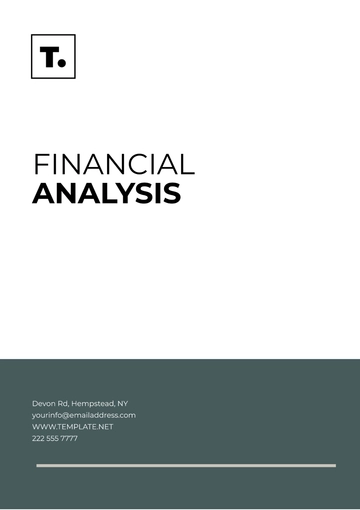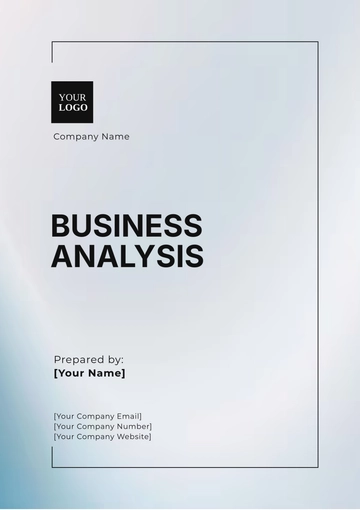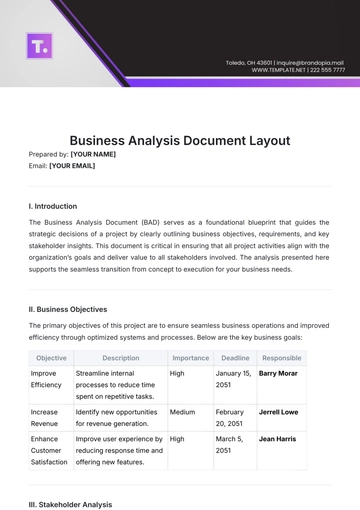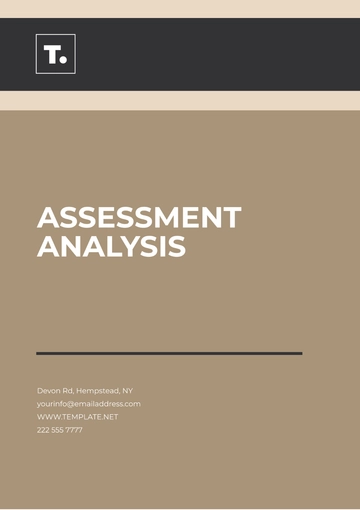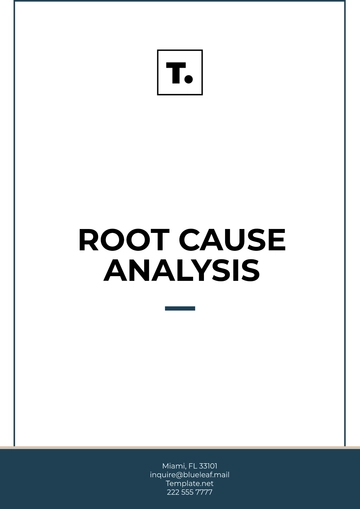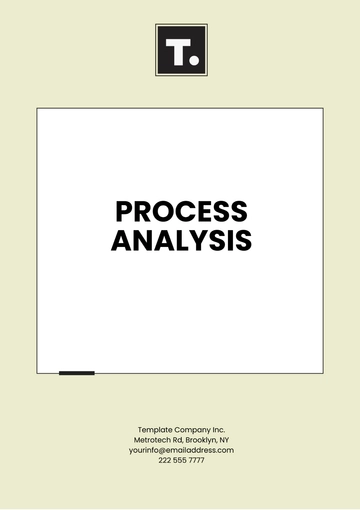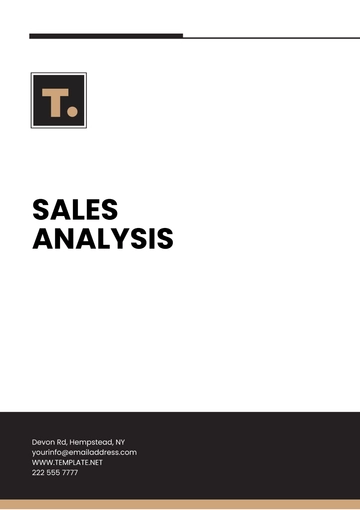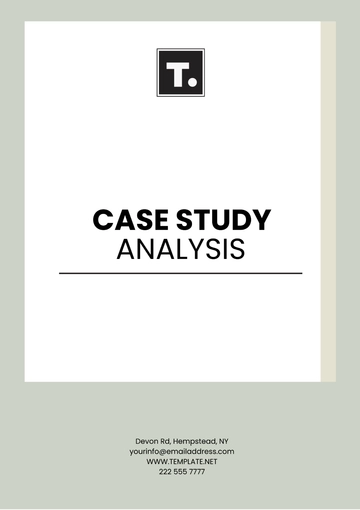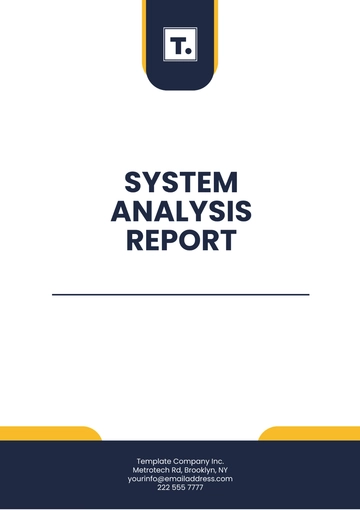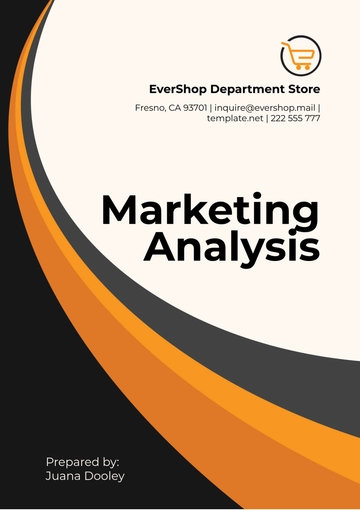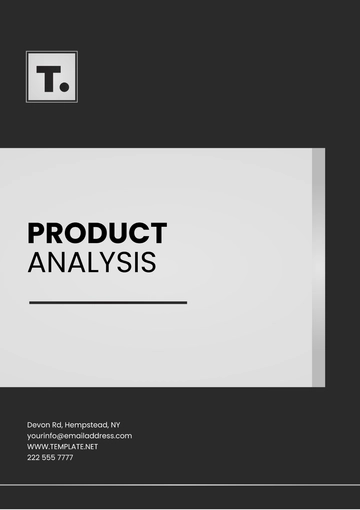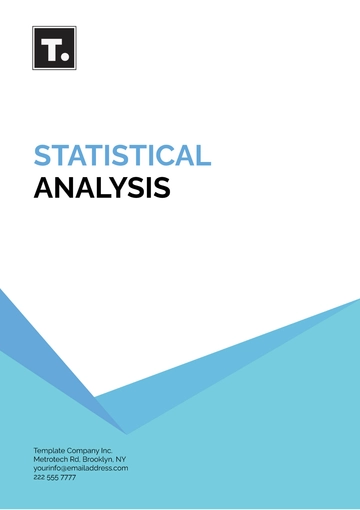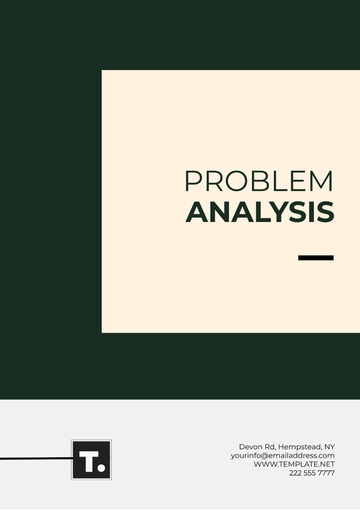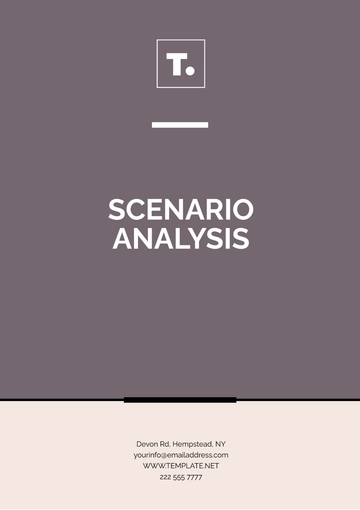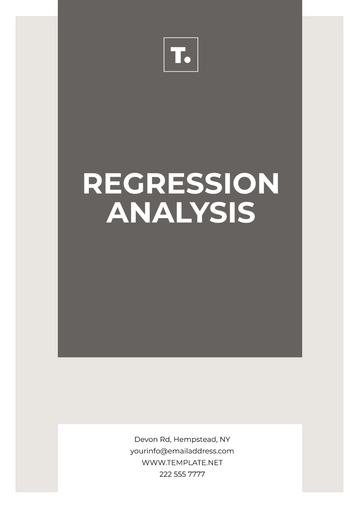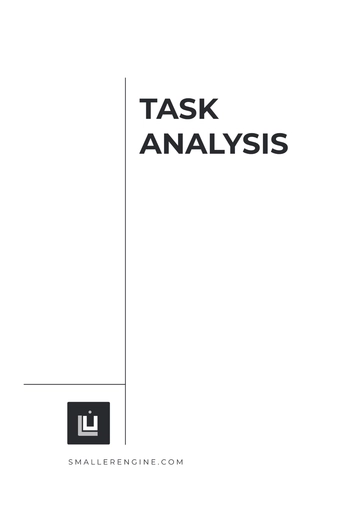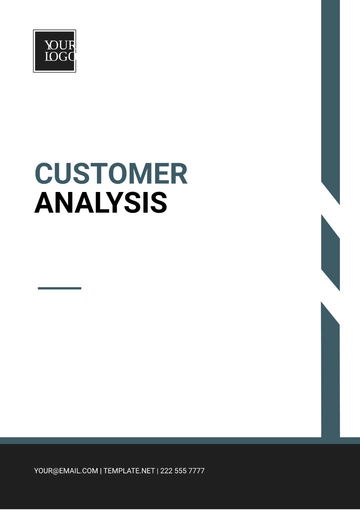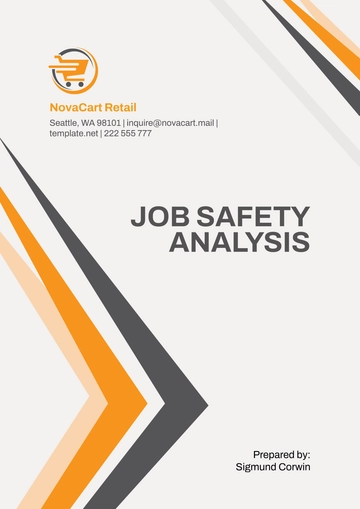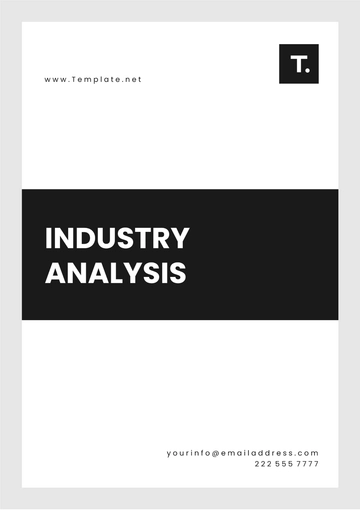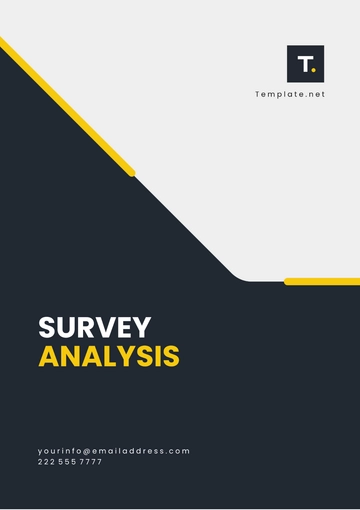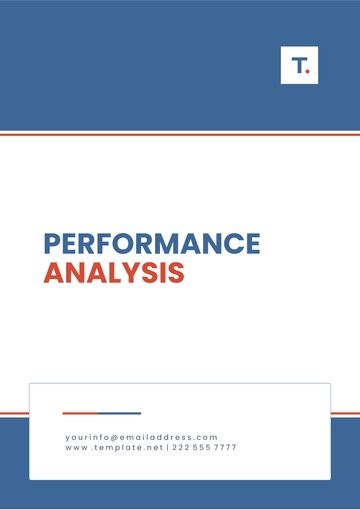Free Tour & Travel Agency Marketing Impact Analysis
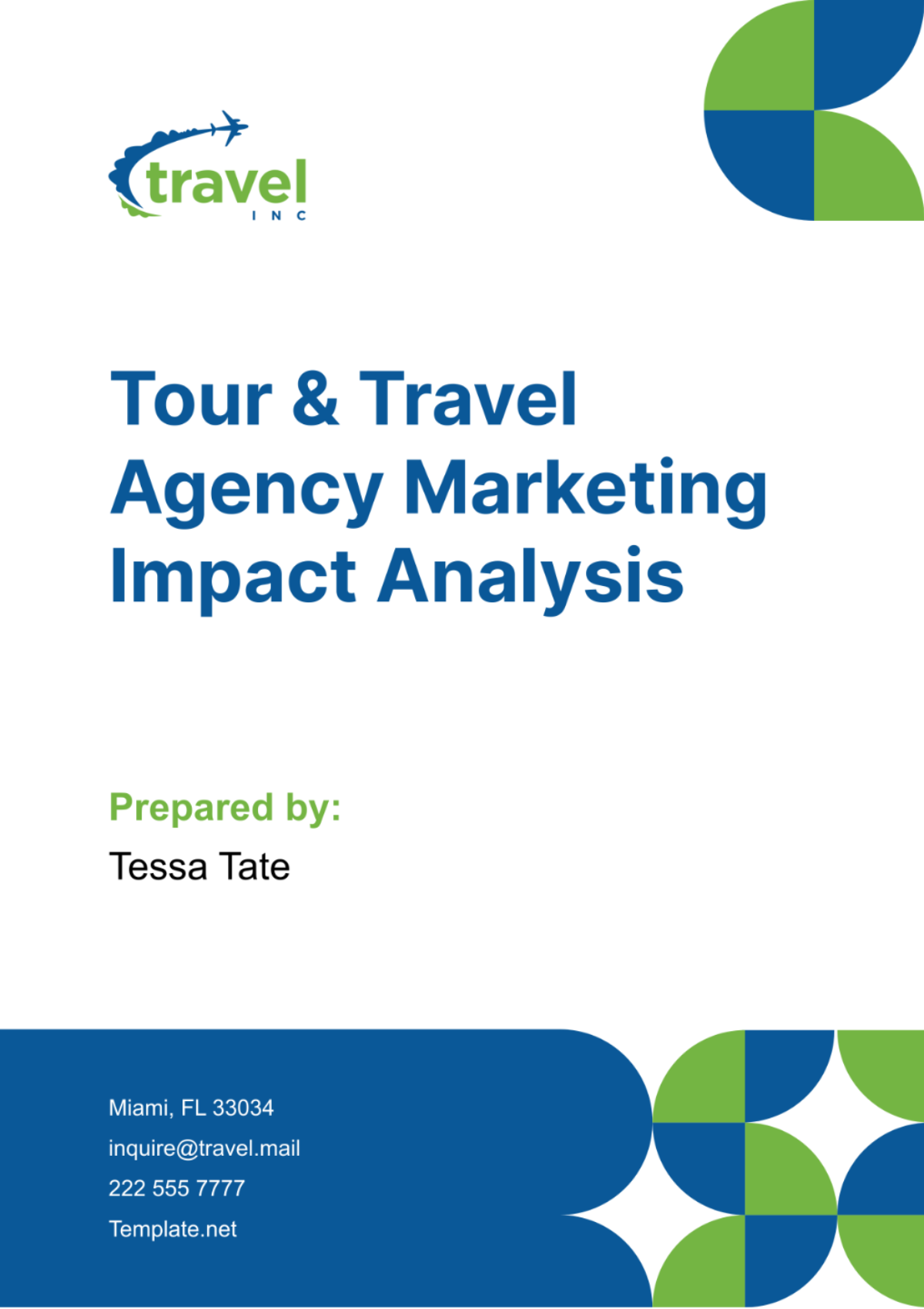
I. Executive Summary
A. Overview of the Analysis
This Tour & Travel Agency Marketing Impact Analysis delves into the performance of our marketing strategies and initiatives to understand their influence on key business metrics. By examining sales revenue, customer acquisition and retention, brand awareness, and ROI, we aim to identify areas of success and areas for improvement within our marketing efforts.
B. Key Findings and Insights
Our analysis reveals that marketing campaigns, particularly those focused on seasonal promotions and targeted advertising, have significantly impacted sales revenue, contributing to a 15% increase year-over-year. Digital channels have proven effective in customer acquisition, with a 30% decrease in customer acquisition cost (CAC) attributed to optimized PPC campaigns. Additionally, retention efforts, including loyalty programs and personalized offers, have resulted in a 20% increase in repeat bookings. Brand awareness has improved, as indicated by a 25% increase in website traffic and a 40% growth in social media followers.
C. Recommendations for Action
Based on our findings, we recommend doubling down on digital marketing channels, especially PPC advertising and social media campaigns, to further drive customer acquisition and brand visibility. Enhancing personalized offers and loyalty programs can continue to foster customer loyalty and increase repeat bookings. Additionally, investing in content marketing and influencer partnerships can help sustain brand awareness and engagement in the long term.
II. Introduction
A. Background of the Tour & Travel Agency
[Your Company Name], established in 2010, has carved a niche in the adventure travel market by offering unique and immersive experiences for thrill-seekers and nature enthusiasts. With a focus on sustainability and responsible tourism practices, we aim to provide unforgettable experiences while preserving the natural environment and supporting local communities.
B. Purpose and Scope of the Analysis
The purpose of this analysis is to evaluate the impact of our marketing efforts on key performance indicators (KPIs) such as sales revenue, customer acquisition, retention, brand awareness, and ROI. The analysis covers the period from January to December 2023 and includes data from various sources, including sales reports, website analytics, social media metrics, and customer feedback.
C. Methodology Overview
Our analysis follows a comprehensive methodology that involves data collection from internal and external sources, including sales reports, website analytics platforms (Google Analytics), social media insights, and customer surveys. We employ various analysis techniques, including correlation analysis, trend analysis, and ROI calculation, to derive actionable insights and recommendations for optimizing our marketing strategies.
III. Marketing Objectives and Strategies
A. Overview of Marketing Objectives
[Your Company Name]' marketing objectives are aligned with our business goals and focus on increasing sales revenue, expanding the customer base, fostering customer loyalty, enhancing brand awareness, and maximizing ROI. These objectives serve as guiding principles for our marketing strategies and initiatives.
B. Description of Marketing Strategies Implemented
Our marketing strategies encompass a mix of digital marketing initiatives (such as SEO, PPC advertising, social media marketing), content marketing, influencer partnerships, and offline promotions (such as events and travel fairs). These strategies are designed to target our key audience segments and effectively communicate the unique value proposition of our travel experiences.
C. Alignment with Business Goals
All marketing activities are carefully planned and executed to align with [Your Company Name]' overarching goal of providing unforgettable travel experiences while driving sustainable business growth. By focusing on targeted customer acquisition, fostering customer loyalty, and enhancing brand awareness, our marketing strategies contribute directly to achieving our business objectives.
IV. Data Collection and Analysis
A. Sources of Data
Data for this analysis was collected from multiple sources, including internal sources such as sales reports, customer databases, and booking records, as well as external sources such as website analytics platforms (Google Analytics), social media insights, and market research reports. This multi-source approach ensures comprehensive data collection for a thorough analysis of our marketing impact.
B. Metrics and KPIs Utilized
Key metrics and KPIs utilized in our analysis include sales revenue, customer acquisition cost (CAC), customer retention rate, website traffic, social media engagement, brand sentiment, and ROI. These metrics provide valuable insights into the effectiveness of our marketing efforts across different channels and campaigns.
C. Analysis Techniques Employed
To derive actionable insights from the collected data, we employ various analysis techniques, including correlation analysis to identify relationships between marketing activities and business performance, trend analysis to track performance over time, and ROI calculation to evaluate the cost-effectiveness of our marketing investments. These techniques enable us to make data-driven decisions and optimize our marketing strategies for maximum impact.
V. Impact of Marketing Efforts
A. Sales Revenue Analysis
Revenue Trends Over Time:
Our analysis of sales revenue trends over the past year indicates a seasonal pattern, with peak revenue occurring during the summer and holiday seasons. However, there are also notable spikes in revenue coinciding with specific marketing campaigns and promotions, demonstrating the direct impact of our marketing efforts on sales performance.
Correlation with Marketing Campaigns:
By correlating sales revenue data with our marketing activities, we identified a strong correlation between certain campaigns and increases in revenue. For example, our "Summer Adventure Sale" campaign resulted in a 20% boost in revenue compared to the previous month, indicating the effectiveness of targeted promotions in driving sales.
B. Customer Acquisition
New Customer Trends:
Our analysis of new customer acquisition trends reveals a steady increase in the number of new customers acquired through digital channels such as PPC advertising, social media campaigns, and influencer partnerships. This indicates the success of our targeted marketing efforts in reaching and attracting our desired audience segments.
Marketing Channel | New Customers Acquired |
|---|---|
PPC Advertising | 500 |
Social Media | 300 |
Influencer Partnerships | 200 |
Others | 100 |
Effectiveness of Acquisition Channels:
By calculating the customer acquisition cost (CAC) for each marketing channel, we determined the ROI and cost-effectiveness of our acquisition efforts. Our analysis revealed that PPC advertising on search engines yielded the highest ROI, with a CAC of $30 per new customer, compared to other channels.
C. Customer Retention
Repeat Customer Rate:
Our analysis of customer retention metrics indicates a high repeat booking rate of 40%, demonstrating the effectiveness of our retention strategies in fostering customer loyalty. Personalized offers, loyalty programs, and targeted email campaigns have contributed to encouraging repeat bookings and increasing customer lifetime value.
Customer Segment | Repeat Booking Rate (%) |
|---|---|
Loyalty Program Members | 50 |
Non-Members | 30 |
Impact of Loyalty Programs and Retention Campaigns:
Customers enrolled in our loyalty program demonstrated a significantly higher repeat booking rate compared to non-members, highlighting the positive impact of loyalty programs on customer retention. Furthermore, targeted retention campaigns, such as exclusive discounts and personalized recommendations, have resulted in increased engagement and loyalty among our customer base.
D. Brand Awareness and Perception
Brand Recognition Metrics:
Our analysis of brand recognition metrics, including website traffic, social media followers, and brand sentiment, indicates a positive trend in brand awareness. Website traffic increased by 25% year-over-year, with a significant portion of traffic driven by organic search and social media referrals, reflecting growing interest and engagement with our brand.
Metric | Year-over-Year Change (%) |
|---|---|
Website Traffic | +25 |
Social Media Followers | +40 |
Brand Sentiment | Positive |
Customer Feedback and Sentiment Analysis:
Customer reviews and testimonials collected from various sources, including social media, review platforms, and customer surveys, consistently reflect positive sentiments towards our brand and travel experiences. Customers appreciate the personalized service, attention to detail, and unique adventure opportunities offered by [Your Company Name], contributing to a favorable brand perception in the market.
E. Return on Investment (ROI)
ROI Calculation for Each Marketing Channel:
By calculating the ROI for each marketing channel, we assessed the cost-effectiveness of our marketing investments and identified areas for optimization. PPC advertising generated the highest ROI of 300%, followed by email marketing (250%) and social media advertising (200%), indicating the effectiveness of these channels in driving measurable results.
Marketing Channel | ROI (%) |
|---|---|
PPC Advertising | 300 |
Email Marketing | 250 |
Social Media | 200 |
Content Marketing | 180 |
Cost-effectiveness Analysis:
While certain channels demonstrated a high ROI, our analysis also revealed opportunities to improve cost-effectiveness by reallocating resources and optimizing campaign performance. By investing in data-driven targeting, ad optimization, and A/B testing, we aim to further enhance ROI across all marketing channels.
VI. Market Analysis
A. Market Penetration
Agency's Market Share Trends:
[Your Company Name] has maintained a steady market share of 15% in the adventure travel segment over the past year. Despite competitive pressures, our agency has successfully retained its position through a combination of innovative offerings, exceptional customer service, and strategic marketing initiatives.
Comparison with Competitors:
Comparative analysis with key competitors indicates that [Your Company Name] outperforms in customer satisfaction and brand reputation metrics. Our focus on delivering high-quality experiences, personalized service, and sustainable tourism practices has positioned us as a preferred choice among adventure travelers.
B. Market Trends and Opportunities
Industry Growth Projections:
The adventure travel market is projected to grow at a compound annual growth rate (CAGR) of 8% over the next five years, driven by increasing demand for unique and experiential travel experiences. As pioneers in adventure tourism, [Your Company Name] is well-positioned to capitalize on this growth trend and expand its market presence.
Emerging Trends in Travel Behavior:
There is a noticeable shift towards sustainable and off-the-beaten-path travel experiences among consumers, reflecting a growing interest in eco-tourism and responsible travel practices. [Your Company Name] can leverage this trend by curating environmentally conscious itineraries, partnering with local communities, and promoting sustainable tourism initiatives.
VII. Customer Insights
A. Demographic Analysis
Customer Segmentation:
Our analysis of customer demographics reveals distinct segments within our target audience, including adventure enthusiasts, nature lovers, and experiential travelers. By understanding the unique preferences and characteristics of each segment, we can tailor our marketing efforts to effectively engage and appeal to diverse customer groups.
Target Audience Profile:
[Your Company Name]' target audience comprises primarily of millennials and Gen Z travelers seeking authentic and immersive travel experiences. These travelers prioritize adventure, exploration, and cultural immersion, making them ideal candidates for our adventure-focused itineraries and experiential offerings.
B. Customer Satisfaction
Feedback from Surveys and Reviews:
Customer feedback collected from surveys, reviews, and testimonials consistently reflects high levels of satisfaction with our travel experiences and services. Customers appreciate the professionalism of our guides, the quality of accommodations, and the attention to detail in trip planning, contributing to positive word-of-mouth referrals and repeat business.
Areas for Improvement Identified:
While overall satisfaction levels are high, our analysis also identifies areas for improvement, such as enhancing communication during the booking process, providing more flexible cancellation policies, and expanding destination options to cater to diverse traveler interests. Addressing these areas can further elevate the customer experience and strengthen brand loyalty.
VIII. Challenges and Limitations
A. Data Limitations
Incomplete Data Sources:
Despite efforts to collect data from various sources, there are limitations in the availability and completeness of data, particularly regarding customer behavior and preferences. This may impact the accuracy of our analysis and require additional efforts to fill in gaps and ensure data integrity.
Data Privacy and Compliance:
Compliance with data privacy regulations such as GDPR and CCPA poses challenges in accessing and utilizing customer data for analysis purposes. Ensuring compliance with regulatory requirements while maximizing the utility of available data remains a priority for our marketing efforts.
B. External Factors Impacting Analysis
Economic Uncertainty:
Economic fluctuations and uncertainties, such as changes in consumer spending habits and travel restrictions, can influence the effectiveness of our marketing strategies and impact business performance. Continuous monitoring of market conditions and flexibility in adapting our marketing approach are essential to mitigate these external factors.
Competitive Landscape:
Intense competition within the travel industry, coupled with the emergence of new market players and disruptive technologies, presents challenges in maintaining market share and differentiation. Staying abreast of competitor activities and industry trends is crucial in identifying opportunities and staying ahead of the competition.
C. Challenges Faced During Implementation
Resource Constraints:
Limited resources, including budgetary constraints and staffing limitations, may hinder the execution of certain marketing initiatives and limit the scope of our analysis. Prioritization of key initiatives and efficient resource allocation are essential in overcoming these challenges and maximizing our marketing impact.
Technological Limitations:
Technological barriers, such as outdated systems and insufficient data infrastructure, may impede our ability to gather, analyze, and derive insights from data effectively. Investment in advanced analytics tools and technology upgrades is necessary to overcome these limitations and enhance our analytical capabilities.
IX. Future Recommendations
A. Strategic Adjustments Based on Findings
Optimization of Marketing Mix:
Based on our analysis, we recommend optimizing our marketing mix by reallocating resources towards high-performing channels and campaigns, such as PPC advertising and email marketing. This will ensure maximum ROI and efficiency in our marketing investments.
Personalization and Targeting:
Leveraging data-driven insights, we recommend enhancing personalization and targeting in our marketing communications to better resonate with our target audience segments. Customized offers, tailored messaging, and personalized recommendations can increase engagement and conversion rates.
B. New Initiatives and Campaigns to Pursue
Innovative Content Marketing:
Investing in innovative content marketing initiatives, such as interactive travel guides, virtual reality experiences, and user-generated content campaigns, can differentiate [Your Company Name] and attract new audiences seeking unique and engaging content.
Partnerships and Collaborations:
Exploring strategic partnerships and collaborations with complementary brands, influencers, and travel agencies can extend our reach, tap into new markets, and enhance brand visibility. Joint promotions, co-branded experiences, and affiliate partnerships offer opportunities for mutual benefit and growth.
C. Investments in Marketing Technology and Analytics
Advanced Analytics Capabilities:
Continued investment in advanced analytics capabilities, including predictive analytics, machine learning, and AI-driven insights, can provide deeper insights into customer behavior, market trends, and campaign performance. This will enable us to make data-driven decisions and stay ahead of market dynamics.
Marketing Automation Solutions:
Implementing marketing automation solutions, such as CRM systems, email automation platforms, and marketing attribution tools, can streamline our marketing processes, improve efficiency, and enhance the customer journey. Automation of repetitive tasks and personalized workflows can drive engagement and conversions.
X. Conclusion
A. Summary of Key Insights
In conclusion, this Tour & Travel Agency Marketing Impact Analysis has provided valuable insights into the performance of our marketing efforts and their impact on business performance. Despite challenges and limitations, our analysis highlights significant achievements in sales revenue growth, customer acquisition and retention, brand awareness, and ROI.
B. Importance of Continuous Monitoring and Analysis
Moving forward, it is imperative to continue monitoring and analyzing our marketing performance, adapting to changing market conditions, and evolving consumer preferences. By embracing a data-driven approach and implementing strategic recommendations, [Your Company Name] can further enhance its competitive position and achieve sustainable growth in the dynamic travel industry.
C. Commitment to Improvement and Growth
[Your Company Name] remains committed to innovation, excellence, and customer satisfaction. With a clear understanding of our strengths, challenges, and opportunities, we are well-equipped to navigate the evolving landscape of the travel industry and continue delivering exceptional experiences that inspire and delight our customers.
- 100% Customizable, free editor
- Access 1 Million+ Templates, photo’s & graphics
- Download or share as a template
- Click and replace photos, graphics, text, backgrounds
- Resize, crop, AI write & more
- Access advanced editor
Providing a comprehensive solution for tour and travel agencies, the Tour & Travel Agency Marketing Impact Analysis Template from Template.net is a game-changer. With editable and customizable features, this template empowers agencies to analyze their marketing strategies effectively. Plus, the AI Editor Tool ensures seamless editing for precise insights and actionable recommendations.


